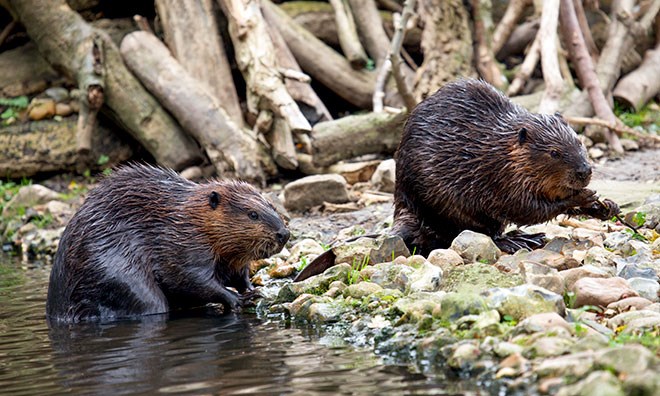A Canadian icon is causing some heartache throughout the MD of Bonnyville.
Beavers, while known for being one of Canada's national animals, are also considered pests, and the municipality is hoping to find a better solution to the problem.
Currently, the MD hires licensed trappers to capture and remove a pesky rodent whose dam may be causing flooding of roads or properties, specifically ones that are at risk of damaging their infrastructure.
The other option is blasting the structure altogether, however, in many cases the beaver comes back to the same spot to rebuild their home.
“Trapping season opens up Oct. 1, and we have some trappers lined up for spots that are bad. They will be out there sooner than later to help get rid of these pests that have been causing us trouble for the last couple of years,” Matt Janz, general manager of environmental and protective services said during the Wednesday council meeting.
Coun. Dana Swigart questioned if the MD could be doing more, after residents approached him about the issue, expressing their frustrations with the ongoing beaver problem.
“People think we have more of a beaver problem than we can handle,” he stressed.
One solution he offered was creating a bounty system, where someone would be paid for every beaver they bring in.
“We’ve talked about bounties before. Our program, what we currently have, isn’t a bounty, but we do give incentives to those contract trappers. We picked a pool of 10 to 15 people that are professionals and have licenses, we tell them our problem areas and we pay them an incentive when they bring the tails back in. We give them money toward their mileage (too),” detailed Janz.
He added, there have been other municipalities that have utilized bounties, which operate similar to the MD's existing wolf and coyote program.
“The challenges I see with that is we don’t know where those animals are coming from,” Janz stated. “It’s a little harder to control that. I would think we would see people go after the easy-target beavers that maybe aren’t even a problem. They could be in a slew next to the road or next to somewhere where they haven’t caused a problem, but people are going to target those animals because they’re easy to get, and they’re worth money if there’s a bounty system.”
Janz explained how when it comes to beaver control, the MD puts their infrastructure first.
“Our main focus is our infrastructure,” he explained. “We do have another focus that helps our agriculture producers by blasting dams at no fee… The challenge that we find is a lot of the ratepayers don’t help themselves. They rely back on the municipality and say ‘these are your beavers, you have to look after them,’ but they’re not our beavers and we try to educate them that they have to take some onus on themselves. Most times they don’t.”
He added, some of the onus falls on the landowners to try and resolve the issues on their properties.
Coun. Ed Duchesne agreed.
“We have to ask the landowners and neighbours to help with their own problem. That’s basically what we have to do.”
Through their current system, the MD works with local trappers under the Alberta Trappers Association by hosting meetings and training sessions to educate the public.
This, Janz said, is where they "get our people from, is that core group of trappers that are educated and professional.”
The Agricultural Service Board (ASB) has been considering whether or not there are better or different alternatives to the municipality's current beaver control methods.
One of their options is to charge landowners a fee for not blasting a dam or trapping a beaver causing concern on their property.
“(By) making the landowners more financially responsible for the blasting, they may end up taking more onus on themselves,” noted Janz.
A draft policy will be drawn up and presented to council in the coming weeks, in hopes of fixing a problem that's been gnawing on landowners for years.



